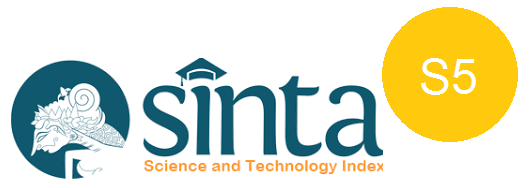PSYCHOLOGICAL CONFLICT BETWEEN CHARACTERS OF FATHER AND SON IN ANIMATED MOVIE HOW TO TRAIN YOUR DRAGON
DOI:
https://doi.org/10.47313/pujangga.v5i1.729Abstract
ABSTRACT
This research is entitled ―Psychological Conflict between Characters of Father and Son in Animated Movie How to Train Your Dragon‖. The background of the study is based on my interest in the conflict of the movie. The conflict is between a strong chief of Viking with his weak son who has different perspective on dragon. To find out that internal conflict, psychological analysis is done to both characters. The objective of this research is to answer the problems of the research which focuses on the conflicting ego between Hiccup and Stoic related to the parent-children relationship they have, how they defend their ego and how Stoic finally accepts Hiccup‘s ego. Intrinsic analysis on the characters and the conflict was conducted to find out the characterization and the main conflict, while psychological approach was used to analyze the characters‘ behavior and personality to find out why both characters have the internal conflict. The result of the analysis shows that, psychologically, their ego, their attitude and behavior were governed by the superego. The different superego and the fact that they have parent-children relationship made the conflict serious. Finally, the conflict resolves after Stoick accepted his son‘s ego. It makes an impact on their relationship as father and son.
Keywords: character, conflict, psychology, id-ego-superego, parent-children relationship.
ABSTRAK
Penelitian yang berjudul “Psychological Conflict between Characters of Father and Son in Animated Movie How to Train Your Dragon” ini dilatarbelakangi oleh ketertarikan terhadap konflik dalam ceritanya. Konflik dalam film tersebut ditunjukkan oleh dua tokoh yaitu Sang Kepala Suku Viking yang berperawakan kuat dan anaknya yang memiliki fisik lemah. Mereka memiliki pendapat yang berbeda tentang keberadaan naga. Untuk memahami konflik internal masing-masing karakter, digunakan analisis psikologi. Tujuan penelitian ini adalah untuk menjawab permasalahan tentang perselisihan ego antara tokoh Hiccup dan Stoick berkaitan dengan hubungan mereka sebagai anak dan orang tua. Selain itu juga untuk mengetahui bagaimana mereka mempertahankan ego masing-masing hingga akhirnya Stoick dapat menerima ego Hiccup. Analisis tokoh dan konflik dilakukan untuk memahami penokohan dan konflik utama, sedangkan pendekatan psikologi digunakan untuk menganalisis perilaku dan kepribadian tokoh untuk mengetahui alasan munculnya konflik internal pada dua karekter tersebut. Hasil analisis menunjukkan bahwa secara psikologi, ego dan perilaku mereka didorong oleh superego. Perbedaan superego dan hubungan mereka sebagai ayah dan anak membuat konflik semakin rumit. Konflik tersebut berakhir setelah Stoick menerima ego anaknya. Hal itu berpengaruh besar terhadap hubungan mereka berdua.
Kata Kunci: tokoh, konflik, psikologi, id-ego-superego, hubungan orang tua dan anak
References
Arnold, B (Producer), and Sanders, C. Director. 2010. How to Train Your Dragon [Motion Pictures]. United States: DreamWork Animation
Hall, Calvin S. 1956. A Primer of Freudian Psychology. New York: the New American Library.
Herman, Luc and Vervaeck Bart. 2001. Handbook of Narrative Analysis. Lincoln: University of Nebraska Press.
Hiccup. 2008. In Cambridge Advanced Learner‟s dictionary. 3rd ed. Cambridge: Cambridge University Press.
Boulton, Litt.1985. The Anatomy of the Novel, London: Routledge Kegan Paul.
Midkiff, Emily. 2009. “Dragons are Tricky” the Uncanny Dragons of Children‟s Literature. Fafnir-Nordic Journal of Science Fiction and Fantasy Research. Accessed from journal.finfar.org
Pervin, Lawrence A., John, Oliver P. 1997. Personality Theory and Research: Seventh Edition. New York: John Wiley and Sons, Inc.
Stoic. 2008. In Cambridge Advanced Learner‟s dictionary. 3rd ed. Cambridge: Cambridge University Press.









